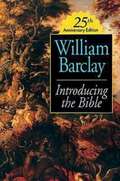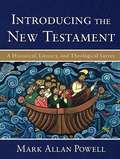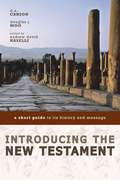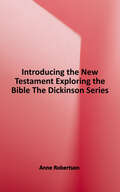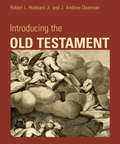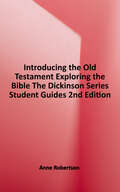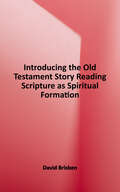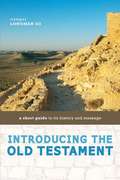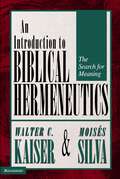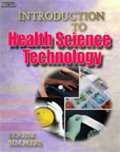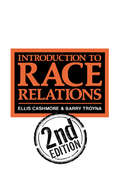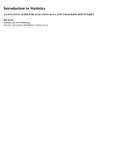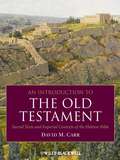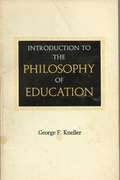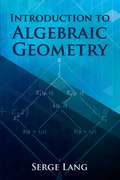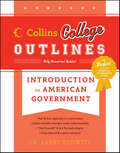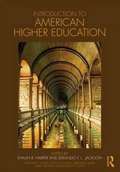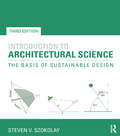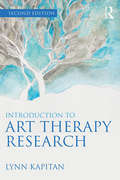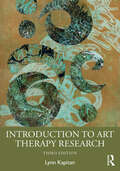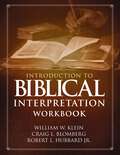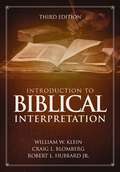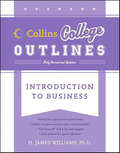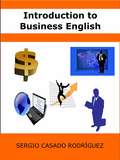- Table View
- List View
Introducing the Bible
by William Barclay"If you want to keep alive, keep learning. . . . To think is a necessity of the Christian life."
Introducing the New Testament: A Historical, Literary, and Theological Survey
by Mark Allan PowellThis book offers an up-to-date New Testament introduction for undergraduate students and general readers. Powell presents disputed and controversial issues fairly, neither dictating conclusions nor privileging skepticism over faith-based perspectives. Includes helpful sidebars, maps, tables, charts, glossary, diagrams, and suggestions for further reading and beautiful artwork illustrating the reception of the New Testament through various times and cultures.
Introducing the New Testament: A Short Guide to Its History and Message
by D. A. Carson Douglas J. Moo Andrew David NaselliAbridgement of An Introduction to the Old Testament. This abridged edition of an established major textbook brings the best of New Testament scholarship to the church and makes it accessible to the average reader. This book focuses on historical questions dealing with authorship, date, sources, purpose, and destination of the New Testament books. By focusing on the essentials, the authors ensure that each book is accurately understood within its historical settings. For each New Testament document, the authors also provide a summary of that book’s content and discuss the book’s theological contribution to the overall canon. This abridgement includes questions at the end of each chapter to facilitate group discussion and personal review. It will help a new generation of students and church leaders better grasp the message of the New Testament
Introducing the New Testament: Exploring the Bible The Dickinson Series, Second Edition
by Rev Anne RobertsonAnd she wrapped him in swaddling clothes and laid him in a manger. Jesus is the central figure of the New Testament and this third volume in the popular Exploring the Bible series examines Jesus in three distinct ways: A man like other men, a Jewish rabbi, and the Christ of Christian faith. Then it's on to the cantankerous Paul, the other New Testament authors, and the wild and baffling book called Revelation. Learn what Nazareth was like in the first century, discover what scholars know and don't know about Jesus as a historical figure, and explore how Paul wrote all those letters. And who is the Antichrist anyway? A Leader's Guide with detailed lesson plans for six group sessions is sold separately. Other volumes in the series include: Volume 1: What Is the Bible? Volume 2: Introducing the Old Testament
Introducing the Old Testament
by Robert L. Hubbard Jr. J. Andrew DearmanThe newest and best Old Testament intro for university and seminary studentsIn this up-to-date, student-friendly text, Robert Hubbard and J. Andrew Dearman bring decades of scholarly study and classroom experience to bear as they introduce readers to the context, composition, and message of the Old Testament.Each chapter orients readers to the Old Testament book or books under consideration, outlining historical and cultural background, literary features, main characters, and structure. Throughout these discussions—of the Torah, the historical books, the prophets, and the poetry—Hubbard and Dearman also identify and trace key theological themes.Replete with maps, illustrations, sidebars, discussion questions, and suggestions for further reading, Introducing the Old Testament will equip students to read, wrestle with, and personally engage these ancient sacred texts.
Introducing the Old Testament - Student Text - Second Edition: Exploring the Bible: The Dickinson Series
by Anne RobertsonBefore Stonehenge or the wheel, back before the pyramids, math, or even the crudest writing existed, ancient peoples gathered and told stories. They told stories of how the world began, what the first people were like, and which of them were heroes or failures. They tried to make sense of the world around them and tried to sort out who the gods were and what those gods wanted from them. More than ten thousand years later, one set of those stories has come down to us in the form of the Old Testament. It is the story of the Jewish people and their distinctive God, giving us a glimpse through story, song, history, and law of the rocky, raucous, faithful, fumbling beginnings of one of the oldest religions on earth. Perhaps you think you know it. Think again. This second course in Exploring the Bible: The Dickinson Series will help you better understand the Old Testament in the context of the world in which it was written. Use it as designed in small-group study or work with it on your own. Either way, you will come to a new appreciation for this amazing collection of ancient texts and the faith that they represent. A detailed Leader's Guide for this study is sold separately. Other volumes in the series include: Volume 1: What Is the Bible? Volume 3: Introducing the New Testament
Introducing the Old Testament Story: Reading Scripture as Spiritual Formation, 1st Edition
by David BrisbenThis book familiarizes students with the Ancient Near Eastern writings that compose the Old Testament. Through the application of literary, historical, and cultural analysis, this textbook helps the modern reader understand the story of the ancient Hebrews and their relationship to God and experience it as the ancient Hebrews did, encouraging a deeply personal and divine connection with the material. The text begins by providing background information regarding the Old Testament. The first two chapters provide context as to what the Old Testament is, where and when its story occurred, a general idea of what the story is about, how the story progressed over time, how to approach scholarly study of the writings, and the authenticity of the works. Each succeeding chapter addresses specific writings within the Old Testament, bringing to light the literary devices at play, the cultural context and significance of each piece, and how ancient Hebrews would have consumed and reacted to each selection. Written to inspire engagement with Old Testament writings on both an academic and spiritual level, Introducing the Old Testament Story is ideal for introductory or survey courses on the Old Testament, as well as courses on religion, especially those focusing on the place of the Bible in spiritual formation. David Brisben, Ph.D., is a professor of Christian ministries at John Brown University. He earned his master's in divinity degree from Erskine Seminary and his doctorate degree from Trinity Evangelical Divinity School. His passion for storytelling, and more specifically the stories found in the Old and New Testaments, drives his vocational calling to teach students what it means to enter and live in God's story.
Introducing the Old Testament: A Short Guide to Its History and Message
by Tremper Longman IIIAn abridged edition of the bestselling book An Introduction to the Old Testament, this rich guide makes Old Testament scholarship accessible to the average reader. Renowned Bible scholar Tremper Longman III gathers the best in historical research and literary analysis to lead the reader through each book of the Old Testament. Most significantly, Longman explores the meaning of each book in light of its cultural setting. Abbreviated chapters highlight key research discoveries, ensuring that the information is both significant and manageable. Including questions at the end of each chapter for group discussion or personal reflection, Introducing the Old Testament makes the words, history, and culture of biblical times come alive for readers. Laypersons as well as church leaders will take away a solid understanding of the historical background and theological message of the Old Testament and be inspired to apply biblical truths to their lives.
Introduction To Biblical Hermeneutics: The Search for Meaning
by Walter KaiserThis standard hermeneutics text has been updated and expanded, allowing the authors to fine-tune their discussions on fundamental interpretive topics. Four new chapters have been added that address more recent controversial issues. The coauthors hold different viewpoints on many topics addressed, making for vibrant, thought-provoking dialogue on this crucial discipline.
Introduction To Health Science Technology
by Louise SimmersIntroduction to Health Science Technology covers the core information needed to pursue a career in health care from an introduction of the health care industry and the basics of a health care system to overview of health care careers and legal and ethical responsibilities of health care workers to medical terminology and basic anatomy and physiology.
Introduction To Networking With Network+
by Microsoft Official Academic Course Staff Timothy PintelloIntroduction to Networking with Network + is the cornerstone for your networking curriculum. It is built around the new Network+ 2012 framework. It is based upon the CompTIA Network+ certification and covers the most recent exam objectives. Are you tired of books that cover new technologies and exam topics in a fleeting fashion, and are bogged down with legacy technology coverage that is now out-dated? This book by Timothy Pintello is up-to-date and covers only relevant and current technologies. This book also includes his revolutionary method for making Subnetting easily understood by new IT
Introduction To Race Relations
by Barry TroynaThis is the second edition of the textbook on race and ethnic relations, which has been adopted by academic and vocational courses and which is designed to be a straightforward introduction to this field of study. It retains all the original features, but reflects on events over the years since its original publication, incorporating accounts of developments in the UK and USA. Suggestions for further readings are revised in the light of the latest research.
Introduction To Statistics: An Intuitive Guide For Analyzing Data And Unlocking Discoveries
by Jim FrostBuild a solid foundation in data analysis. Be confident that you understand what your data are telling you and that you can explain the results to others! I'll help you intuitively understand statistics by using simple language and deemphasizing formulas. This guide starts with an overview of statistics and why it is so important. We proceed to essential statistical skills and knowledge about different types of data, relationships, and distributions. Then we move to using inferential statistics to expand human knowledge, how it fits into the scientific method, and how to design and critique experiments.
Introduction To The Old Testament: Sacred Texts And Imperial Contexts Of The Hebrew Bible
by David M. CarrThis comprehensive, introductory textbook is unique in exploring the emergence of the Hebrew Bible in the broader context of world history. It particularly focuses on the influence of pre-Roman empires, empowering students with a richer understanding of Old Testament historiography. <P><P>Provides a historical context for students learning about the development and changing interpretations of biblical texts <P><P>Examines how these early stories were variously shaped by interaction with the Mesopotamian and Egyptian, Assyrian, Babylonian, Persian, and Hellenistic empires <P><P>Incorporates recent research on the formation of the Pentateuch <P><P>Reveals how key biblical texts came to be interpreted by Jewish, Christian, and Muslim faiths Includes numerous student-friendly features, such as study questions, review sections, bibliographies, timelines, and illustrations and photos
Introduction To The Philosophy Of Education
by E. KnellerThe purpose of this book is to outline those elements of philosophy that are relevant to a proper understanding of education and the task of teaching. Much of the content comes from a text that I edited, entitled Foundations of Education (Wiley, 1963). I have rewritten and in places enlarged the original, especially the sections on existentialism and logical analysis, which I have assigned to a separate chapter.
Introduction to Algebraic Geometry: Interscience Tracts In Pure And Applied Mathematics, No. 5 (Dover Books on Mathematics)
by Serge LangAuthor Serge Lang defines algebraic geometry as the study of systems of algebraic equations in several variables and of the structure that one can give to the solutions of such equations. The study can be carried out in four ways: analytical, topological, algebraico-geometric, and arithmetic. This volume offers a rapid, concise, and self-contained introductory approach to the algebraic aspects of the third method, the algebraico-geometric. The treatment assumes only familiarity with elementary algebra up to the level of Galois theory.Starting with an opening chapter on the general theory of places, the author advances to examinations of algebraic varieties, the absolute theory of varieties, and products, projections, and correspondences. Subsequent chapters explore normal varieties, divisors and linear systems, differential forms, the theory of simple points, and algebraic groups, concluding with a focus on the Riemann-Roch theorem. All the theorems of a general nature related to the foundations of the theory of algebraic groups are featured.
Introduction to American Government (Collins College Outlines)
by Larry ElowitzMaster Your Coursework with Collins College OutlinesThe Collins College Outline for Introduion to American Government covers all the major events in the creation of both the government and legislation, from the origins of the United States and the Bill of Rights and the Constitution to the three branches of government to civil rights and modern-day public policy. This detailed outline is a must-have for any student of the American political system. Completely revised and updated by Dr. Larry Elowitz, Introduion to American Government includes a test yourself seion with answers and complete explanations at the end of each chapter. Also included are bibliographies for further reading, as well as numerous charts, timelines, and illustrations.The Collins College Outlines are a completely revised, in-depth series of study guides for all areas of study, including the Humanities, Social Sciences, Mathematics, Science, Language, History, and Business. Featuring the most up-to-date information, each book is written by a seasoned professor in the field and focuses on a simplified and general overview of the subje for college students and, where appropriate, Advanced Placement students. Each Collins College Outline is fully integrated with the major curriculum for its subje and is a perfe supplement for any standard textbook.
Introduction to American Higher Education
by Shaun R. Harper; Jerlando F.L JacksonnFaculty; Teaching, Learning and Curriculum; College Students; Organisations, Leadership and Governance; Higher Education Policy.
Introduction to Architectural Science: The Basis of Sustainable Design
by Steven V. SzokolayNow in its third edition, this book provides the ideal and only reference to the physical basis of architectural design. Fully updated and expanded throughout, the book provides the data required for architects to design buildings that will maintain the users comfort in a variety of conditions, with minimal reliance on energy intensive methods like air conditioning. This is not a ‘how to’ book but answers the question why. It equips the reader with the tools to realize the full potential of the good intentions of sustainable, bioclimatic design. All sections have been revised and updated for this third edition including all the most relevant developments affecting heat, light and sound controls. The book responds to the need of understanding beyond ‘rules of thumb’.
Introduction to Art Therapy Research
by Lynn KapitanSince the initial publication of Introduction to Art Therapy Research, interest in this field has grown dramatically along with public policy demands for an up-to-date, culturally relevant evidence base on which to practice. This revised and expanded edition pays particular attention to the field’s unique and compelling questions, most current literature, and emerging trends in research, while guiding readers through the basics of qualitative, quantitative, and art-based research design. Written by a prominent figure in the world of art therapy, this pragmatic text is organized into three parts: Part I provides an overview of the basic steps in conceptualizing an art therapy research study, with an emphasis on perspectives that are intrinsic to art therapy. Chapters in Part II cover an inclusive methodological framework from quantitative and outcomes research to qualitative, practitioner-based field research, critical-participatory orientations, phenomenological and narrative approaches, and the growing influence of art-based research in art therapy. Part III offers up-to-date ethical guidelines and valuable tools for understanding and evaluating research reports, as well as practical guidance for publication in scholarly journals based on the author’s long experience as the editor of the field’s leading scholarly publication. Also included are added coverage on cross-cultural research as well as high quality examples from published, peer-reviewed art therapy research studies that illustrate material throughout the text.
Introduction to Art Therapy Research
by Lynn KapitanThoroughly updated with references to newly published research and engaging first-person reflections from art therapist researchers working throughout the world, the third edition of Introduction to Art Therapy Research places art therapy research within a socially complex world of compelling questions and emerging trends, while guiding readers through basic research design. First published in 2010, this seminal textbook fulfills the need for a pragmatic, educational text that broadly surveys the purpose and role of art therapy research, guides students and practitioners in becoming knowledgeable of their field’s research literature and ethical principles, and instructs them into the kinds of projects, questions, and methods they might undertake. Written by a prominent figure in the world of art therapy, this pragmatic text is organized into three parts: Part I provides an overview of the basic steps in conceptualizing an art therapy research study, with an emphasis on perspectives that are intrinsic to art therapy. Chapters in Part II cover an inclusive methodological framework from quantitative and outcomes research to qualitative, practitioner-based field research, critical-participatory orientations, phenomenological and narrative approaches, and the growing influence of art-based research in art therapy. Part III offers up-to-date ethical guidelines and valuable tools for understanding and evaluating research reports, as well as practical guidance for publication in scholarly journals based on the author’s long experience as the editor of the field’s leading scholarly publication. Also included are added coverage on cross-cultural research as well as high quality examples from published, peer-reviewed art therapy research studies that illustrate material throughout the text.This landmark text will continue to educate and inform new and emerging art therapists.
Introduction to Biblical Interpretation Workbook: Study Questions, Practical Exercises, and Lab Reports
by Craig L. Blomberg William W. Klein Robert L. Hubbard Jr.This workbook accompanies the third edition of Introduction to Biblical Interpretation by William W. Klein, Craig L. Blomberg, and Robert L. Hubbard Jr. Following the textbook’s structure, it offers readings, activities, and exercises designed to teach students how to understand and apply the Bible.This workbook gives students a chance to get hands-on experience in interpreting biblical texts as they are guided along by insightful questions and pointers from the authors. Ultimately the workbook is designed to get students interacting with the content of the textbook and with the biblical text in a way that helps reinforce classroom learning, while at the same time giving both student and instructor a way to gauge how well the student is learning the material from the textbook.The third edition of a classic hermeneutics textbook sets forth concise, logical, and practical guidelines for discovering the truth in God’s Word. A valuable tool for readers who desire to understand and apply the Bible, this text:Defines and describes hermeneutics, the science of biblical interpretationSuggests effective methods to understand the meaning of the biblical textSurveys the literary, cultural, social, and historical issues that impact any textEvaluates both traditional and modern approaches to Bible interpretationExamines the reader’s role as an interpreter of the text and helps identify what the reader brings to the text that could distort its messageTackles the problem of how to apply the Bible in valid and significant ways todayProvides an extensive and revised annotated list of books that readers will find helpful in the practice of biblical interpretation
Introduction to Biblical Interpretation: 3rd Edition
by Craig L. Blomberg William W. Klein Robert L. Hubbard, Jr.Introduction to Biblical Interpretation, now in its third edition, is a classic hermeneutics textbook that sets forth concise, logical, and practical guidelines for discovering the truth in God&’s Word.With updates and revisions throughout that keep pace with current scholarship, this book offers students the best and most up-to-date information needed to interpret Scripture.Introduction to Biblical Interpretation:Defines and describes hermeneutics, the science of biblical interpretationSuggests effective methods to understand the meaning of the biblical textSurveys the literary, cultural, social, and historical issues that impact any textEvaluates both traditional and modern approaches to Bible interpretationExamines the reader&’s role as an interpreter of the text and helps identify what the reader brings to the text that could distort its messageTackles the problem of how to apply the Bible in valid and significant ways todayProvides an extensive and revised annotated list of books that readers will find helpful in the practice of biblical interpretationUsed in college and seminary classrooms around the world, this volume is a trusted and valuable tool for students and other readers who desire to understand and apply the Bible.
Introduction to Business (Collins College Outlines)
by H. James WilliamsThe Collins College Outline for Introduction to Business provides students with a detailed overview of the basic business studies curriculum. This guide covers business foundations, the global economy, company structure and formation, personnel and production management, labor-management relations, marketing concepts and logistics, statistical analysis, financial strategies, careers in business, and much more. Completely revised and updated by Dr. H. James Williams, Introduction to Business includes practical "test yourself" sections with answers and complete explanations at the end of each chapter. Also included are bibliographies for further reading, as well as charts, graphs, and illustrations.The Collins College Outlines are a completely revised, in-depth series of study guides for all areas of study, including the Humanities, Social Sciences, Mathematics, Science, Language, History, and Business. Featuring the most up-to-date information, each book is written by a seasoned professor in the field and focuses on a simplified and general overview of the subject for college students and, where appropriate, Advanced Placement students. Each Collins College Outline is fully integrated with the major curriculum for its subject and is a perfect supplement for any standard textbook.
Introduction to Business English (Words and Their Secrets)
by Sergio Casado RodríguezAn ebook designed for those who are interested in perfecting their English, and introducing some of the essential variants, such as English used for business or Business English.
